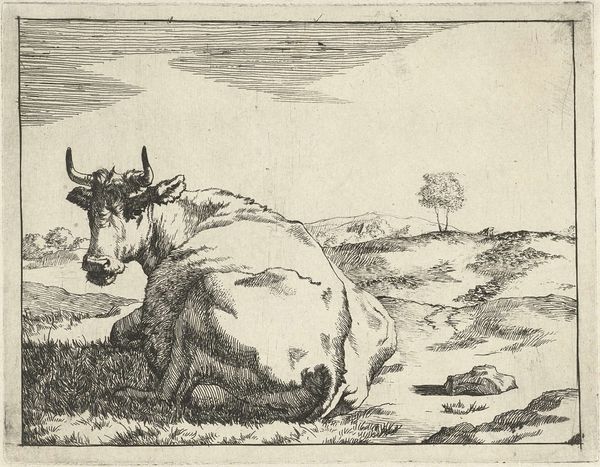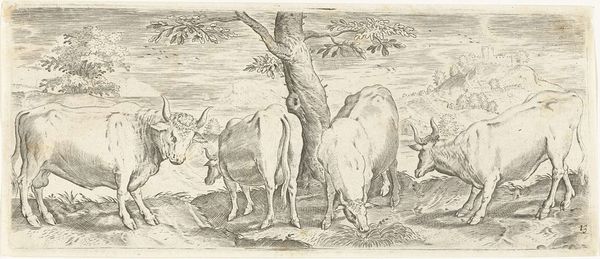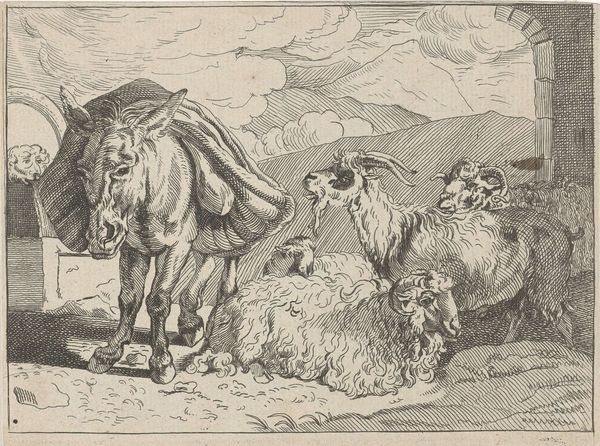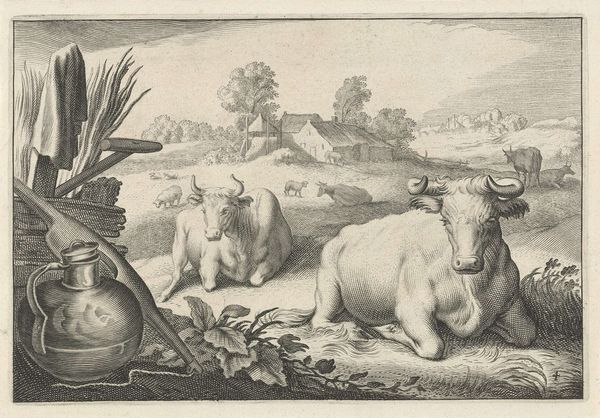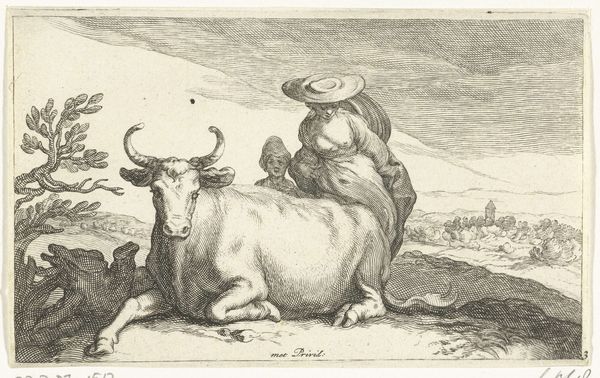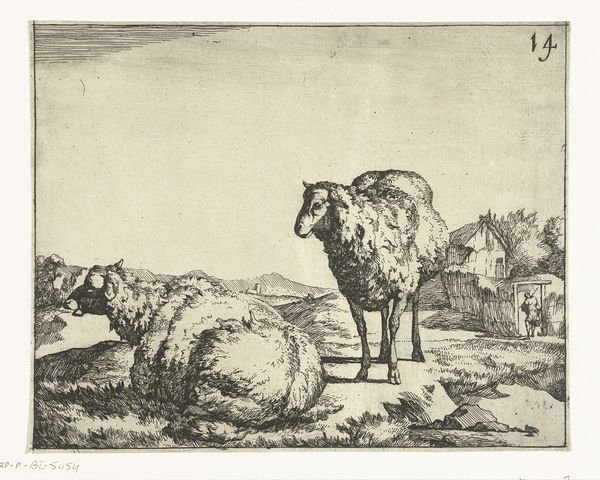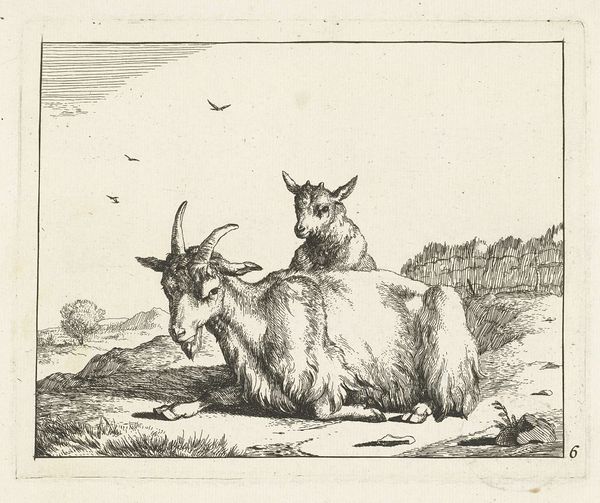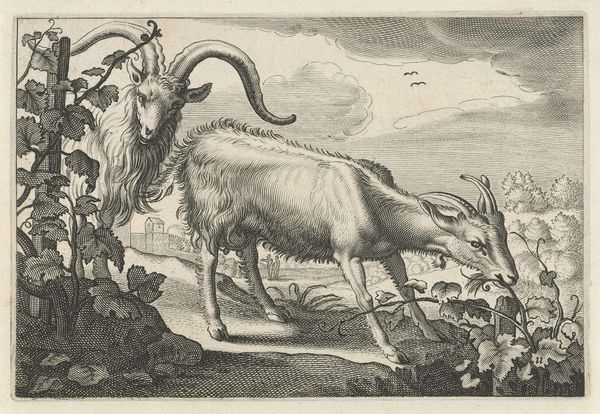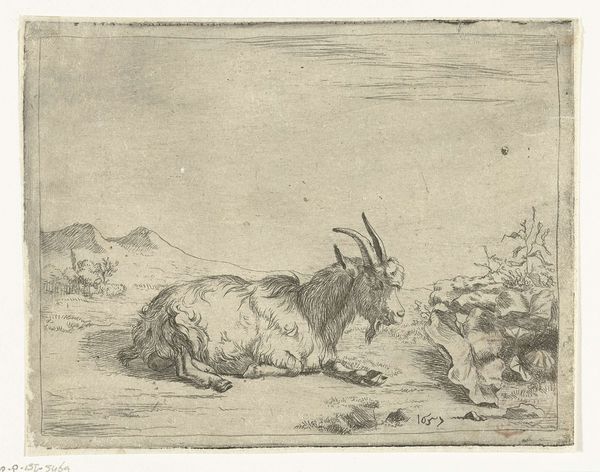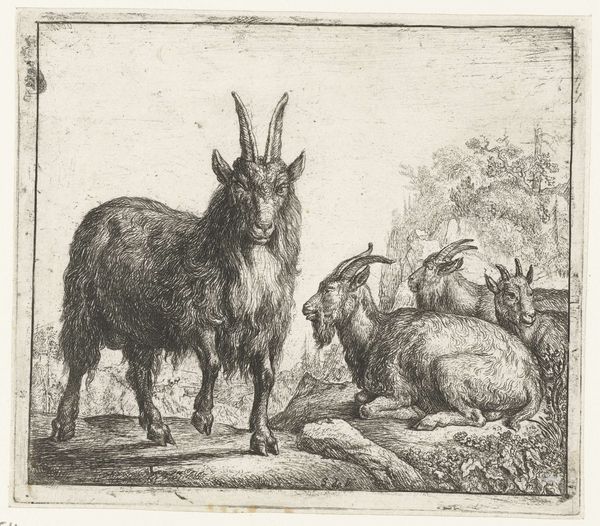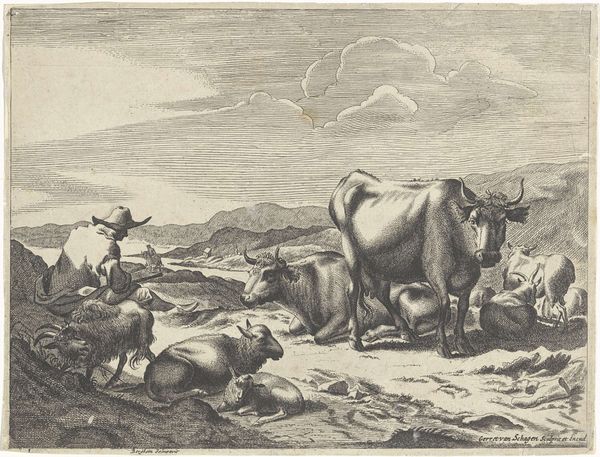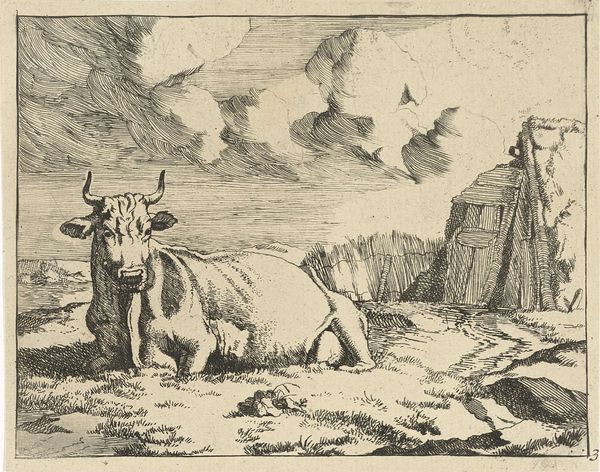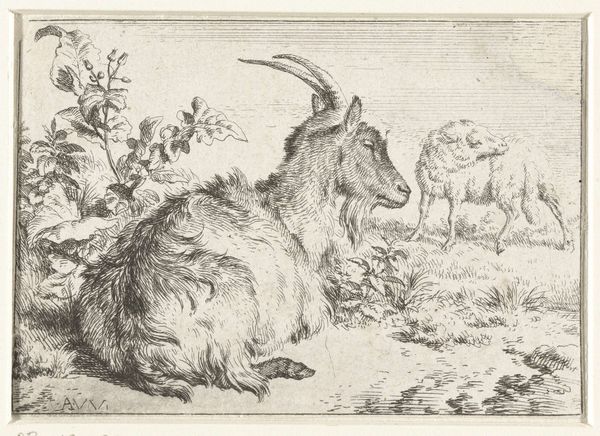
print, engraving
#
dutch-golden-age
# print
#
pen sketch
#
landscape
#
pen-ink sketch
#
horse
#
genre-painting
#
engraving
Dimensions: height 132 mm, width 193 mm
Copyright: Rijks Museum: Open Domain
Curator: Looking at Reinier van Persijn's "Landscape with Two Goats and Two Horses" from 1641, made using engraving techniques, I'm immediately struck by its pastoral simplicity. What are your initial impressions? Editor: I notice first the stark contrast produced through the engraving process. It creates a sense of weightiness, almost a sculptural presence to these animals despite the delicate lines. I’m interested in how the material qualities contribute to the subject’s impact. Curator: Indeed, and if we consider the social climate of the Dutch Golden Age, landscapes like these became a vehicle to express national identity and pride. Animals, often seen as symbols of rural life, ground us in the specifics of a nation defining itself through its land and produce. What labour underpinned that world? Editor: Precisely! And the printmaking itself echoes that focus. Engraving demanded specific skilled labor, its own kind of artisanry separate from painting or sculpture, and arguably more accessible. Consider how these prints circulated. Was the landscape accessible to all who could appreciate them as printed items, irrespective of class? Curator: A crucial point. Looking at this through a contemporary lens, we must acknowledge how such idealized landscapes could sanitize or romanticize the realities of agricultural labor. There were inequalities etched into society as sharply as those lines on the page. Who owns land; whose labour makes it valuable? Editor: And, of course, that's critical to understanding not only the social but the material realities of the art’s production as well. Where did Van Persijn source his tools, what were they made of and from where, who taught him the craft of engraving? It situates the artwork in a broader web of production and consumption. Curator: Exactly. Van Persijn is reminding the world how the idyllic vision of life, which has become a global capitalist motif is constructed on an exploited workforce. How we represent that affects political policy, and thus the lives of the workers. It can be considered, on one hand, a celebration of natural beauty; on the other, the means of legitimising brutal practice. Editor: It allows us to explore the material connections linking artistic representation, labor, and socioeconomic structures. Looking more closely at the means of production invites critical awareness of the art itself. Curator: This examination gives new depth, I think, to our appreciation of the intersection of Dutch landscape and historical context in this single work. Editor: Agreed. Considering materiality allows to unearth the often-hidden infrastructure supporting its making and meanings.
Comments
No comments
Be the first to comment and join the conversation on the ultimate creative platform.
